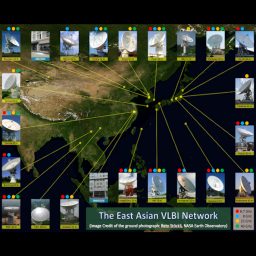Coffee talks
Friday 18/11/2022 @ 11:50, Sala riunioni quarto piano e on-line (meet.google.com/sue-bwvk-axf)
Mieko Takamura (University of Tokyo), "Probing the heart of active Narrow-line Seyfert 1 galaxies with wideband VERA polarimetry"
Narrow-line Seyfert 1 galaxies (NLSy1) are a peculiar class of active galactic nuclei (AGN). Owing to the relatively small masses of their central black holes with possible high accretion rates, NLSy1 may provide a clue for understanding the physics of rapidly-evolving supermassive black holes. Among NLSy1, a particularly interesting subgroup is the one detected in high-energy gamma-rays since they are suggested to contain powerful jets similar to blazars and radio galaxies despite the host galaxies being spirals. Nevertheless, the parsec-scale structure and nuclear environment of these sources are still not well understood, due mainly to the weak nature of radio emission, compared to the other types of jetted AGN. To overcome this challenge, we performed very wideband (up to 16Gbps) polarimetric observations with VERA for a sample of gamma-ray Narrow-line Seyfert 1 galaxies (NLSy1) are a peculiar class of active galactic nuclei (AGN). Owing to the relatively small masses of their central black holes with possible high accretion rates, NLSy1 may provide a clue for understanding the physics of rapidly-evolving supermassive black holes. Among NLSy1, a particularly interesting subgroup is the one detected in high-energy gamma-rays since they are suggested to contain powerful jets similar to blazars and radio galaxies despite the host galaxies being spirals. Nevertheless, the parsec-scale structure and nucledetected NLSy1. Thanks to the very wideband recording that significantly increased the sensitivity, we successfully detected the weak radio emission (both total intensity and polarization) towards these nuclei at 22 and 43GHz. Moreover, the wideband observations allowed us to reveal the rotation measure (RM) of the detected polarized features in detail (both in-band and band-to-band). In this talk, I will present the initial results from the wideband VERA polarimetry on our NLSy1 targets, and discuss the implications and compare them with those of other types of AGN.

